Best speakers for home use 2025: Overhaul your system with our pick of hi-fi speakers for all budgets
From bookshelf to floorstanding, wallet-friendly to budget-busting, traditional to high-tech - these are the very best speakers you can buy
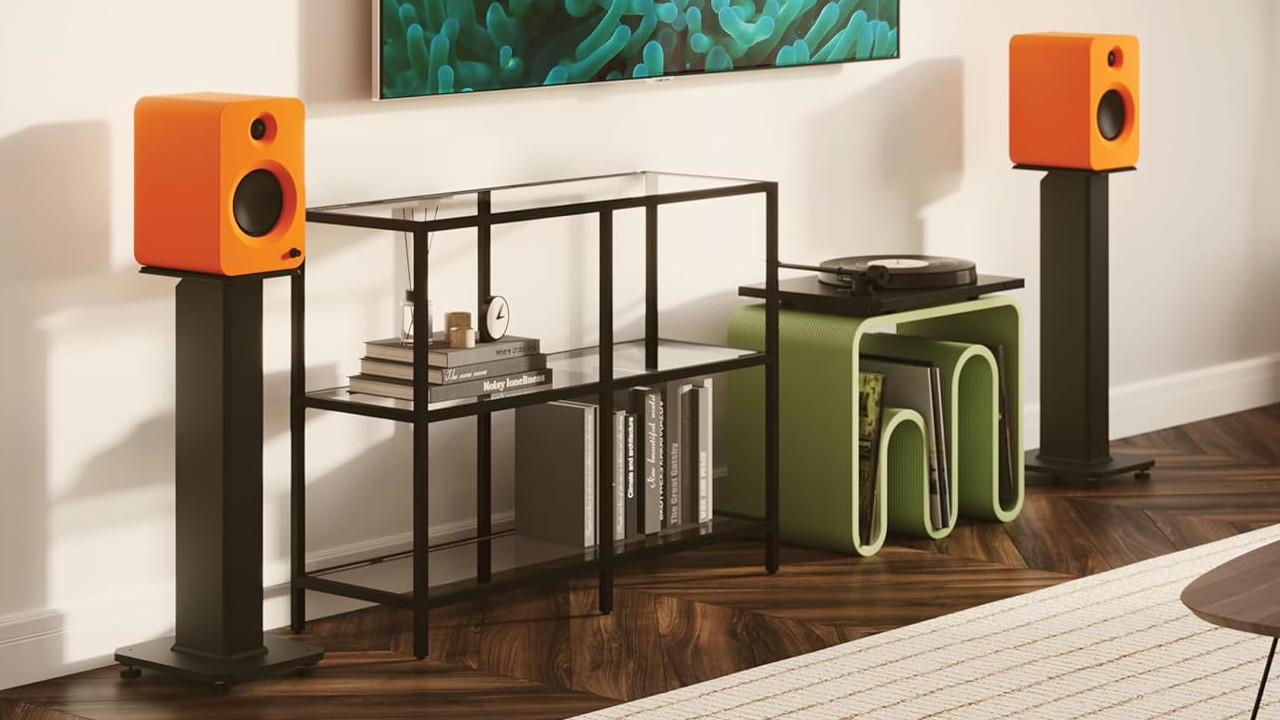
If you’re building a hi-fi system block by block, then buying one of the best speakers for home use is often the final piece of the puzzle. Just because they tend to come late in the purchasing-decision pecking-order, though, doesn’t make them an afterthought. In fact, your choice of best speakers for home use could be the most impactful decision you make for your hi-fi.
Think of your hi-fi’s speakers as the voice box of the whole system. Small characteristic differences between speakers can make a veritable shedload of difference to the essential qualities of the sounds you send them – and you deserve no less than ‘quality’, whatever that means to you. Gut-punching, wall-vibrating low end for your Swans records? Rich, reedy mids for your daily playthrough of Judas Priest’s British Steel? Or simply enough sturdiness to carry through to the farthest room in the house? Choose wisely, and that which you seek will surely be yours.
Speakers come in all manner of guises, from small desktop-friendly computer speakers to demure passive bookshelf speakers to floor-standing fare. Below, you’ll find my breakdown of the many and varied best on the market.
However, if you want to know what my top pick is straight away, then I've given that accolade to the Bowers & Wilkins 606 S3 - an excellent mid-sized option that looks fantastic and sounds just as good as you'd expect a Bowers & Wilkins product to.
If you’d like a little more guidance on what you should be looking out for, head on down to the FAQ section below.
Quick list
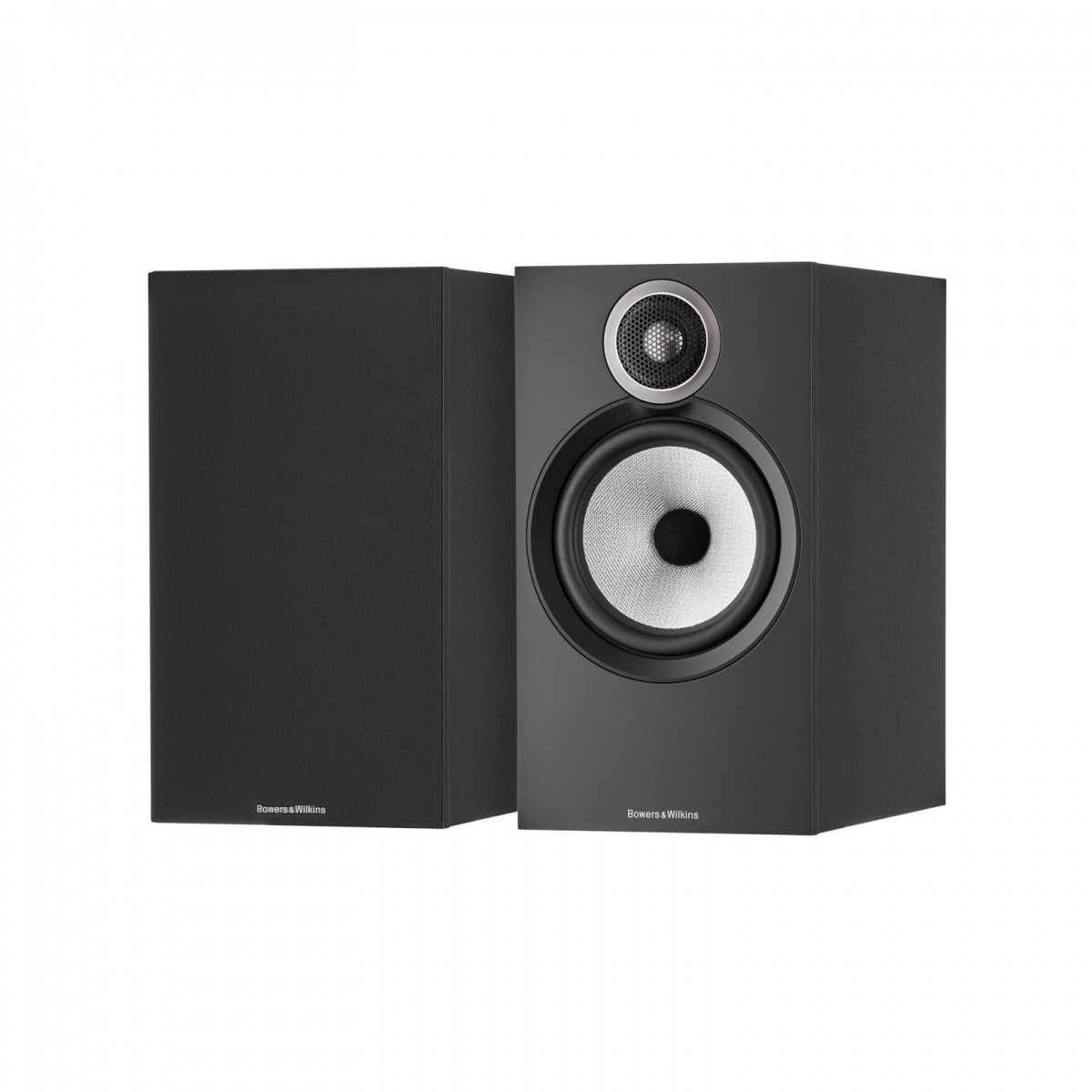
When it comes to my favourite speaker for home use, I think the B&W 606 S3 is hard to beat. It boasts get audio quality, they look awesome, are a great size and while pricy, you definitely get what you pay for.
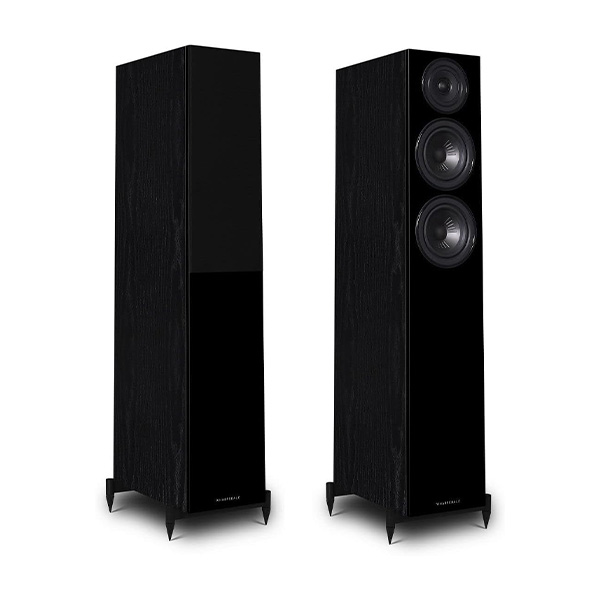
I've owned several Wharfedale speakers in the past and they definitely have a special place in my heart. The Diamond 12.3 floorstanders boast clear, room-filling sound and the price is great for what you get.
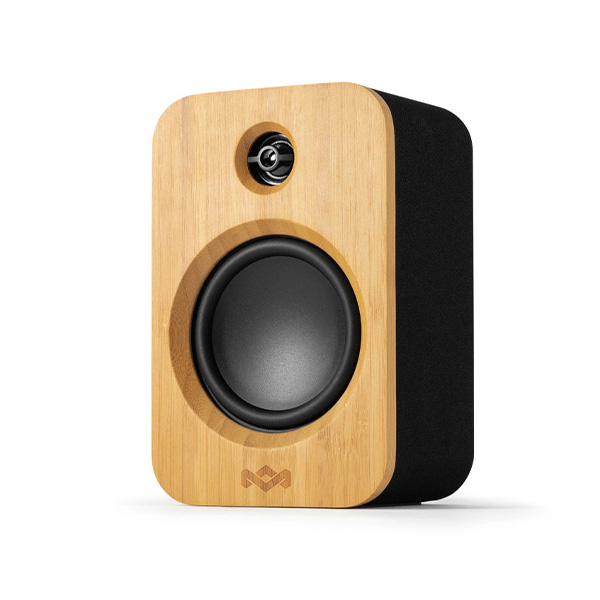
I'm a big fan of House Of Marley products due to their warm audio and their construction from sustainable and recycled materials. This is a great speaker for a low price and with its bamboo finish, it looks great.
Best overall

1. Bowers & Wilkins 606 S3
Our expert review:
Specifications
Reasons to buy
Reasons to avoid
✅ Buy if you want a great speaker from a reputable brand: B&W make great audio gear and the 606 S3 is a brilliant speaker for your home. Great audio and a classic look.
❌ Avoid if money is tight: The S3 might be on the pricey side if you're on a budget, but this mid-range is a quality speaker.
Bowers & Wilkins have a reputation for building beautiful speakers, and the 606 S3 are no exception. Just as with the Anniversary Edition S2s that sat at the top of this list in years gone by, these speaker are guaranteed to elicit some form of comment from visitors, audiophiles or nay.
And again - play said visitor some music, and they’ll be even more impressed. The 606 S3 benefit from a re-tooled ‘Decoupled Double Dome Titanium tweeter’, an artfully-repositioned 6.5” woofer for a more cohesive sound, and a deeper cab for better bass.
The improvements are small but make a big difference to a set of bookshelf speakers that already held a great deal of esteem in my opinion.
These are mid-sized units, but still easy enough to find space for – and will work well in all but the smallest of rooms, provided you can leave room between them and the walls (for that dimpled bass reflex port to do its thing).
The Bowers & Wilkins 606 S3 are certainly something of a financial outlay, but well worth it for some signature smoothness from this highly regarded audio firm.
Best floorstanding
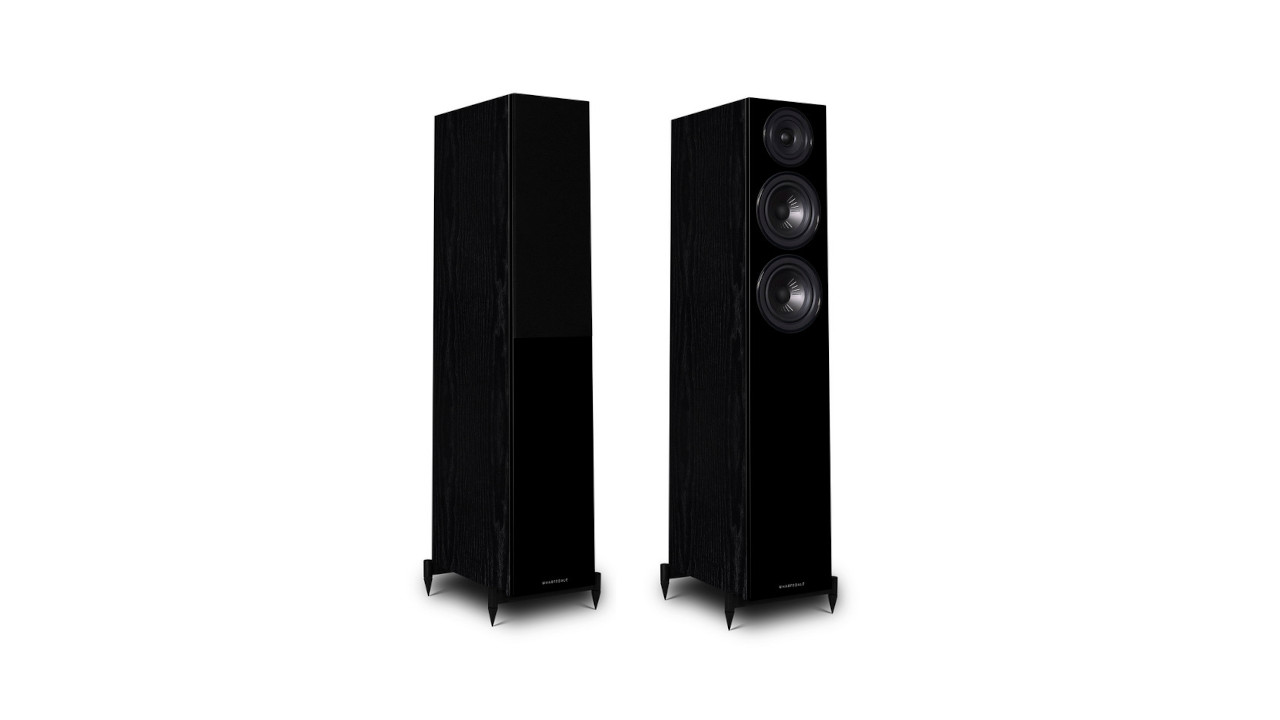
2. Wharfedale Diamond 12.3
Our expert review:
Specifications
Reasons to buy
Reasons to avoid
✅ Buy if you want a top quality floor-standing speaker that offers room-filling sound: Wharfedales have been my go to floorstanders for years and the Diamond 12.3 are my top choice.
❌ Avoid if space is at a premium: Floorstanding speakers need space for optimal performance, so you might find a bookshelf or desktop speaker is a better choice.
Wharfedales have often been my speakers-of-choice in hi-fi setups gone past, and remain a brand for which I have no shortage of fondness. Even if I were to box up that fondness and hide it in the attic, these impressive floorstanders would still win my heart.
Wharfedale’s Diamond 12.3 speakers are floorstanding speakers that float far above the quality of entry-level competitors, but with a price that trails dangerously close to that same entry level.
They sound hugely responsive even in the larger spaces for which they’re designed, and sound surprisingly good off-axis too.
So many other floorstanding speakers could sit in this very spot on my round-up, but I’ve chosen these Wharfedales as the best floorstanding speakers for an essential reason: accessibility.
The sound is incomparable for the price; unless you’re rocking a pretty incredible setup, your returns diminish significantly after these incredibly affordable, incredible sounding speakers.
Best bookshelf

3. ELAC Debut 3.0 B5.3
Our expert review:
Specifications
Reasons to buy
Reasons to avoid
✅ Buy if you want a well-priced, stand-mounted pair of speakers: The ELAC Debut 3.0 B5.3 sound amazing and are a good choice for mid-sized rooms.
❌ Avoid if you're after something more portable: These speakers are great but they might still take up a bit of room, so a portable speaker might suit you better.
ELAC has nearly 100 years of heritage to build on, and it does so with aplomb via the ELAC Debut 3.0 B5.3. This is the third iteration of ELAC’s Debut-series bookshelf speakers, and yet again represent phenomenal value at the low-mid range price point.
These passive stand-mounters keep a similar form to the 2.0s that graced this guide beforehand, but are generally and demonstrably a glow-up from what came before.
There’s a whole boatload of improvements to behold here, most remarkably of which is the removal of the front-facing bass reflex port. The whole cabinet’s been reshuffled, moving the port to the rear, expanding the woofer to 5.25”and adding a retooled tweeter too.
The result is an astoundingly well-priced pair of bookshelf speakers that sound a million dollars, and that aren’t as precious as other speakers about how they’re placed.
This is an easy choice if you’ve little space, but big audio dreams.
Best desktop

4. Kanto Audio Ren
Our expert review:
Specifications
Reasons to buy
Reasons to avoid
✅ Buy if you want a stylish pair of speakers: The Kanto Audio Ren not only sound fantastic, but they also come in a range of stylish colours.
❌ Avoid if you want big bass performance: Audio delivery is balanced but bassheads might want to look elsewhere for their thumping beats.
Kanto Audio is a go-to brand for speakers steeped in capital-C Chic. The brand’s been a thing since 2007, but made the most waves in recent years with a refreshing range of smooth-looking speaker systems – a recent release of which easily shot to the top of my own faves list.
Kanto Audio’s Ren speakers are powered bookshelf speakers, available in a handful of highly-aesthetic matte colour finishes including a smokey purple and an irreverent orange. More importantly, these active speakers hide up to 100W of power output, and a level of I/O only comparable to mid-weight home theatre systems. You can listen via RCA in, 3.5mm aux in, Bluetooth 5.3, optical, HDMI ARC and even USB.
The Kanto Ren are extremely well-priced active speakers, that look as much the part as they sound. They’ve a rich, thrumming bass in spite of their size, and in spite of the separate subwoofer output you can utilise.
They’re exceedingly clear, and highly versatile; if you’re starting to build a hi-fi system, you could reasonably and understandably start and stop right here.
Best mid-range

5. Wharfedale Evo 4.4
Our expert review:
Specifications
Reasons to buy
Reasons to avoid
✅ Buy if you want floorstanders that look and sound fantastic: The Evo 4.4 look incredible and deliver big, bold, beautiful audio.
❌ Avoid if you want to save some cash: If budget is an issue, you could always go for the other Wharfedales in this list: the Diamond 12.3
These utterly lovely speakers are the biggest and most expensive of Wharfedale’s new Evo range. And, while undeniably expensive in real terms, they boast high tech features usually reserved for speakers costing a whole load more.
The Air Motion Transformer Tweeter is the most unusual, poshest element, and that’s just one of the four drivers on the face of this fantastically big but also surprisingly elegant floorstander.
The downside is that you need lots of space for the Evo 4.4s to sound as they should, the upside is that they sound amazing. Huge, as expected, but they also balance smooth richness with punchy excitement in the way that very few speakers manage.
An awesome choice if you’ve got the space and budget.
Best premium
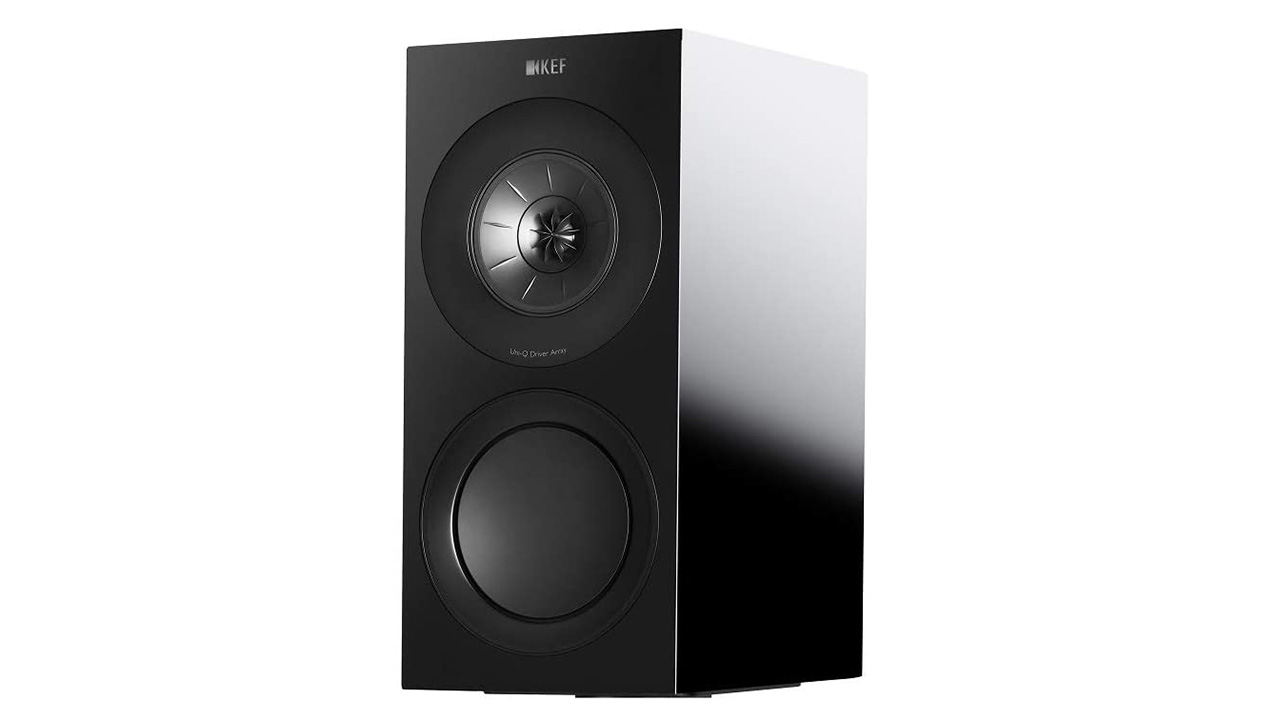
6. KEF R3 Meta
Our expert review:
Specifications
Reasons to buy
Reasons to avoid
✅ Buy if you are shopping at the premium end of the market: If money is no object, then treat yourself to these supremely detailed KEF speakers.
❌ Avoid if you've not recently won the lottery: Price is most definitely a factor here, with a huge financial outlay required to own a pair of these.
KEF, as a speaker brand rarely puts a foot wrong; after all, KEFs tend to be the holy-grail second-hand speakers we keep a watchful eye out for in the charity shops. If you’ve the money to get some brand-spanking new KEFs, though, the R3 Metas are a phenomenal value prospect.
KEF’s original R3 speakers were easily the company’s best speakers in ages, and the Metas offer some excellent improvements on the theme.
They retain the same slim, compact bookshelf form factor as their predecessors, but brings a tighter midrange and more focused high end – and better overall performance too. Don’t plonk these against a back wall, but give them the stands they deserve and you’ll be rewarded.
The R3s that came before were excellent in their own right, but the KEF R3 Metas really sweeten the deal; treat them right and the sound is amazingly well balanced and detailed, with a real subtlety and delicacy that reveals all of the detail and nuance in the best-recorded tracks in your collection. Only, don’t spend the cash if you don’t have the amplifier to do them justice with.
Best Bluetooth
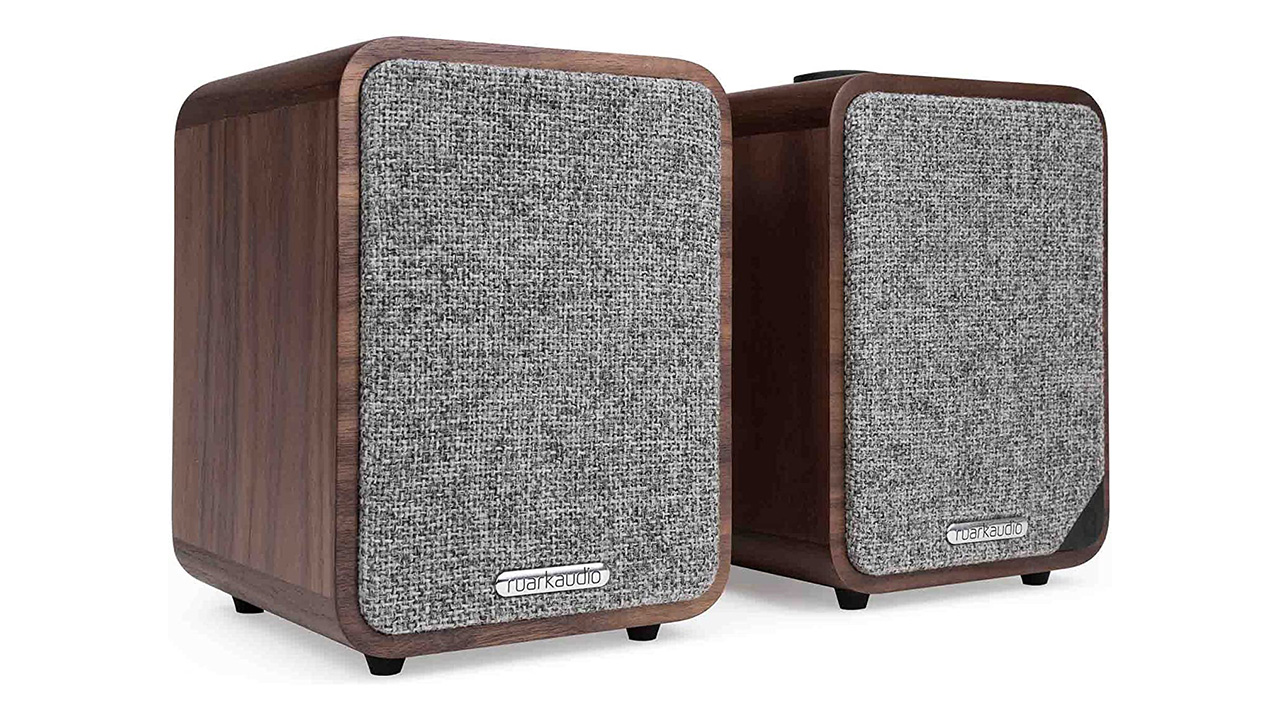
7. Ruark Audio MR1 Mk2
Our expert review:
Specifications
Reasons to buy
Reasons to avoid
✅ Buy if you use your smart device as your main music source: With Bluetooth capabilities, the Ruark Audio MR1 Mk2 is an excellent option for laptop/tablet users.
❌ Avoid if you're in the market for speakers with a modern look: These are really good speakers, but their retro stylings might not jive with your home decor.
The Scandi-style looks might not be to everyone’s taste (Ruark is actually British) but the MR1 Mk2 is a brilliant option if you’re looking for great speakers to connect to a computer or to send tunes to using Bluetooth.
This isn’t quite a full streaming system in the vein of the KEF speakers above, but neither is it a standard pair of hi-fi speakers, because here the amplification is built-in.
In short, if your laptop, tablet or phone is your primary music source, this Ruark speaker set could be right up your street.
Most desktop speakers are brash and in your face, but this Ruark pair has subtlety, balance and genuine musicality.
A flawless option for those with the specific set of requirements.
Best budget
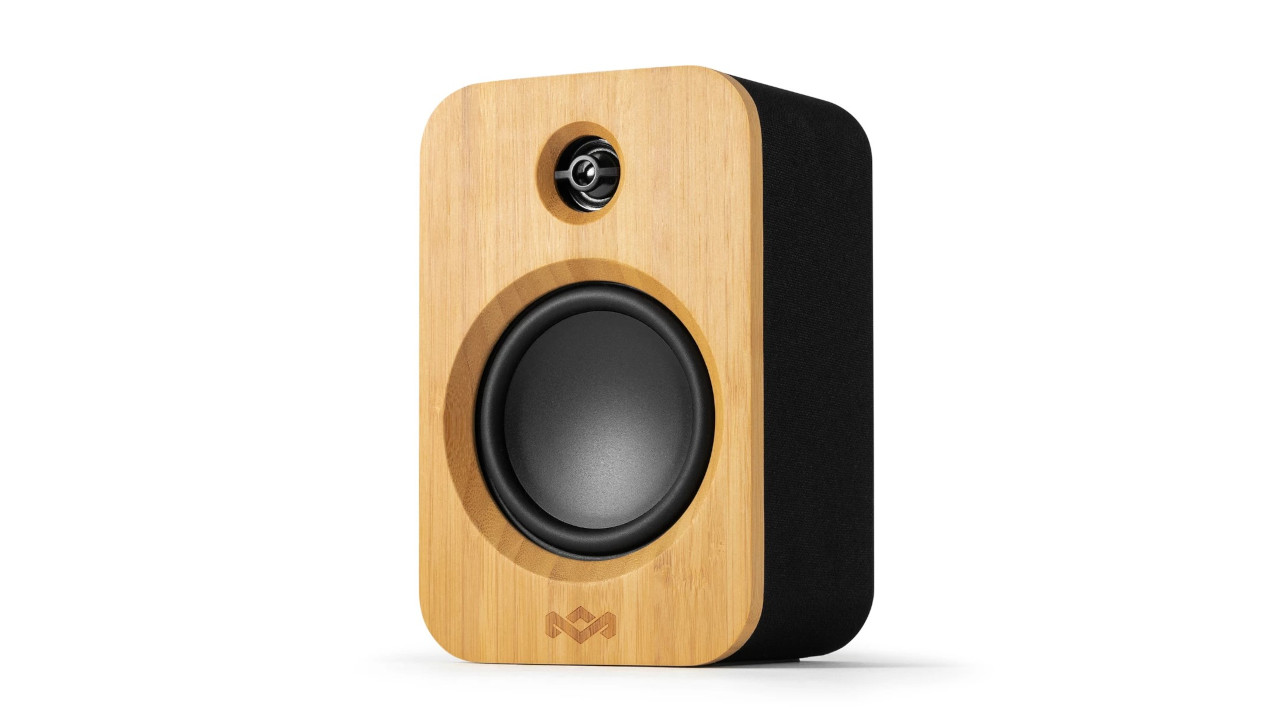
8. House of Marley Get Together Solo
Our expert review:
Specifications
Reasons to buy
Reasons to avoid
✅ Buy if you're after a neat speaker made from recycled and sustainable materials: House Of Marley put green issues at the heart of their business - and this is a nice speaker option for those on a budget.
❌ Avoid if you're after deep and rich audio: Those with a bit more in their wallet will find better audio at a higher price.
If you’re looking for something budget-friendly, you’re probably a little bit weary of the endless stream of similar-looking, highly-plasticky and unimpressive sounding options flooding the market. Enter the House Of Marley Get Together Solo – a breath of fresh air even just with respect to the way it presents itself.
The Get Together Solo is a single bookshelf speaker, that bears a little more in common with portable wireless speakers than home hi-fi fare. But this doesn’t mean it can’t be a great, affordable and austere option for your first hi-fi.
All the better, it is made with bamboo and Rewind fabric (30% reclaimed organic cotton, 30% reclaimed hemp and 40% recycled PET) for sustainability cred. Despite the size, it sounds quite warm, and surprisingly responsive in the drums department too.
The House Of Marley Get Together Solo won’t be winning any prestige awards for its sound or functionality, but at its price point there’s no arguing here. Besides, its green credentials make it a great low-effort, high-sustainability choice in consumer hi-fi.
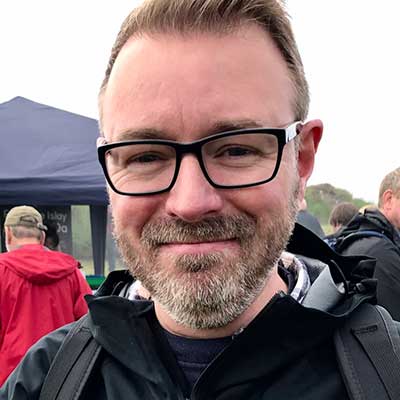
"House Of Marley have delivered another quality product with their bamboo-finished Get Together Solo speaker - a product that produces more of the company's renowned warm audio - all with sustainability in mind."
Read more: House Of Marley Get Together Solo review
FAQ
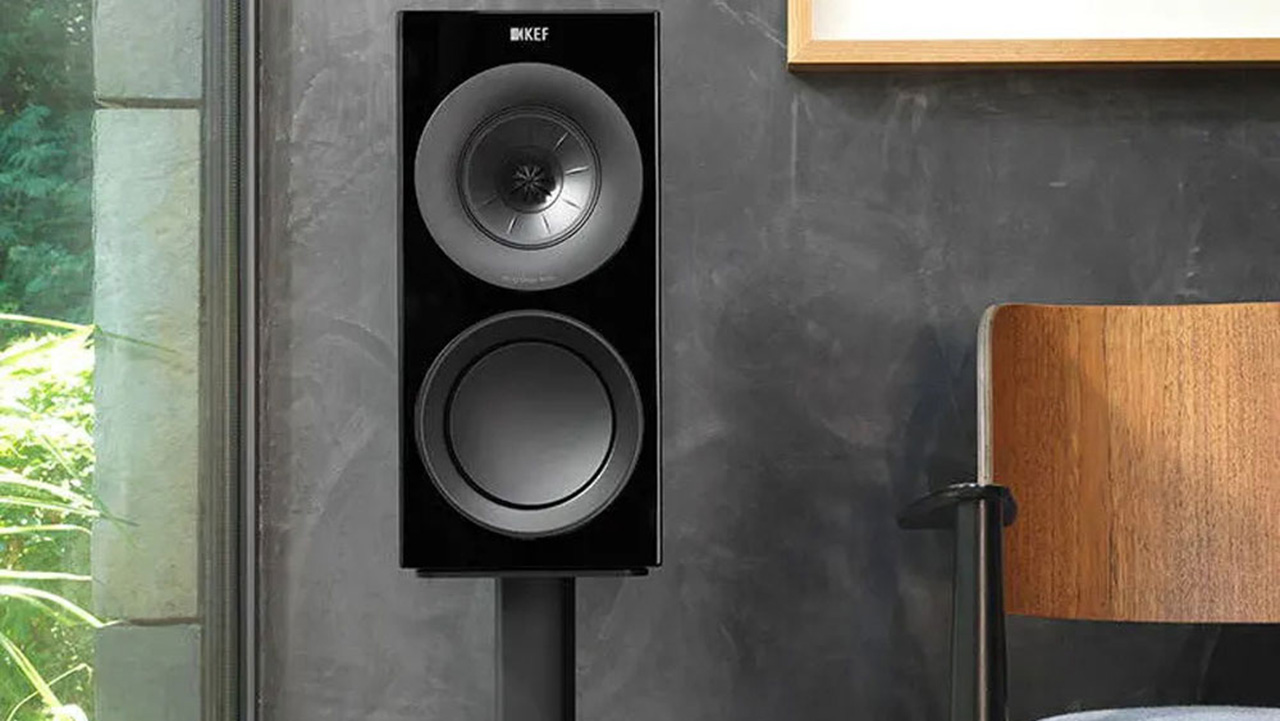
What kind of speakers should I get for home use?
Are you looking for traditional, passive speakers, or something more hi-tech with Bluetooth or even built-in streaming? If you’ve already got a hi-fi system, passive speakers will be the way to go, but if you’re in the market for speakers to partner a computer, for instance, an amplified, desktop pair makes more sense.
There are now models that are more or less complete systems in their own right – instead of buying a streamer, amplifier and speakers, you can just buy a pair of speakers that will do the whole lot – and will also even play nice with other devices such as your TV, should you want them to.
What’s the difference between bookshelf and floorstanding speakers?
If going down the traditional hi-fi speaker route, the next big decision is whether to go with a standmounters or floorstanders. You’ll sometimes see standmounters referred to as ‘bookshelf’ speakers, but it’s better to think of them as standmounters as they will perform vastly better when placed on dedicated stands rather than crammed on a shelf.
Once you’ve factored in stands, standmounters tend to take up just as much space as floorstanders (and can be just as expensive), but they’re often a little less fussy about positioning, working better closer to a wall, for instance. The smaller cabinets often allow for a more agile sound, too.
But many prefer the look of a floorstanding speaker, as well as the extra weight and depth that the extra cabinet volume often lends to the sound.
Floorstanders are often more powerful and capable of going louder, too, and invariably feature extra drivers over their standmount equivalents – although this can make them tonally a little less consistent.
You find that floorstanders also often need a bit more space around them in order to avoid the bass getting too boomy.
How do I connect my passive speakers to my hi-fi?
Passive speakers are typically connected to your hi-fi amp by way of bi-wire cabling. By the way, don’t skimp on the cabling you buy for your set-up – it really makes a difference here.
Budget to spend at least £5 per metre on speaker cable. Banana plugs will cost extra and make it quicker and easier to connect and disconnect components, but they don’t improve sound so by all means save some money and use bare wire for your connections if you want.
How we test
When it comes to sheer musicality, speakers need to exhibit clarity and convey emotion, and we listen out for both when testing. Can we feel the grit in AC/DC vocalist Brian Johnson in For Those About To Rock or clinically dissect Eddie Van Halen’s epic guitar solo on Eruption? The closer the speakers get us to the artist, the more likely we are to raise our thumbs and throw some horns.
We know from experience that getting bass right is also tricky. All too often low frequencies can sound overblown and baggy (some brands even make a virtue of this). Good bass, particularly with metal and prog, should sound tight and clean.
We also test speakers in the confines of our homes - not in studios, unless a pair of speakers are specifically suited for an enclosed space. We do this because we think this will give you a better feel for how the speaker in question perform in the real world. After all, that's how we use our speakers, and we don't want to give you false information about how the product sounds during daily life.
Why you can trust us
⚡ Louder was established in 2017 and founded on long-running brands including Metal Hammer, Classic Rock and Prog (launched in 1986, 1998 and 2009 respectively)
⚡ Over 80,000 products reviewed on site, from music listening tech to albums and box sets
⚡ Our reviewers are all passionate music fans who draw on decades of testing experience
Louder’s reviewing team consists of music fans, musicians and professional product testers, who between them have accumulated decades of product reviewing experience, writing thousands of words on music listening gear across thousands of reviews on Louder. Our tests also inform our buyer's guide - just like this one.
As lifelong music fans, we're serious about the tech we listen to our favourite artists on. We want them to sound incredible, giving us all the detail those bands intended us to hear, and deliver the perfect balance of bass, mids and highs. We're looking for pure immersion in our chosen sounds, whether it's a classic '70s rock album, or a cutting-edge noise band.
And we test the the best speakers for home use with albums we know inside and out, and that we've listened to on a variety of systems already, so we know exactly what we should be hearing and when we're being short-changed by lackluster audio.
Meet the experts
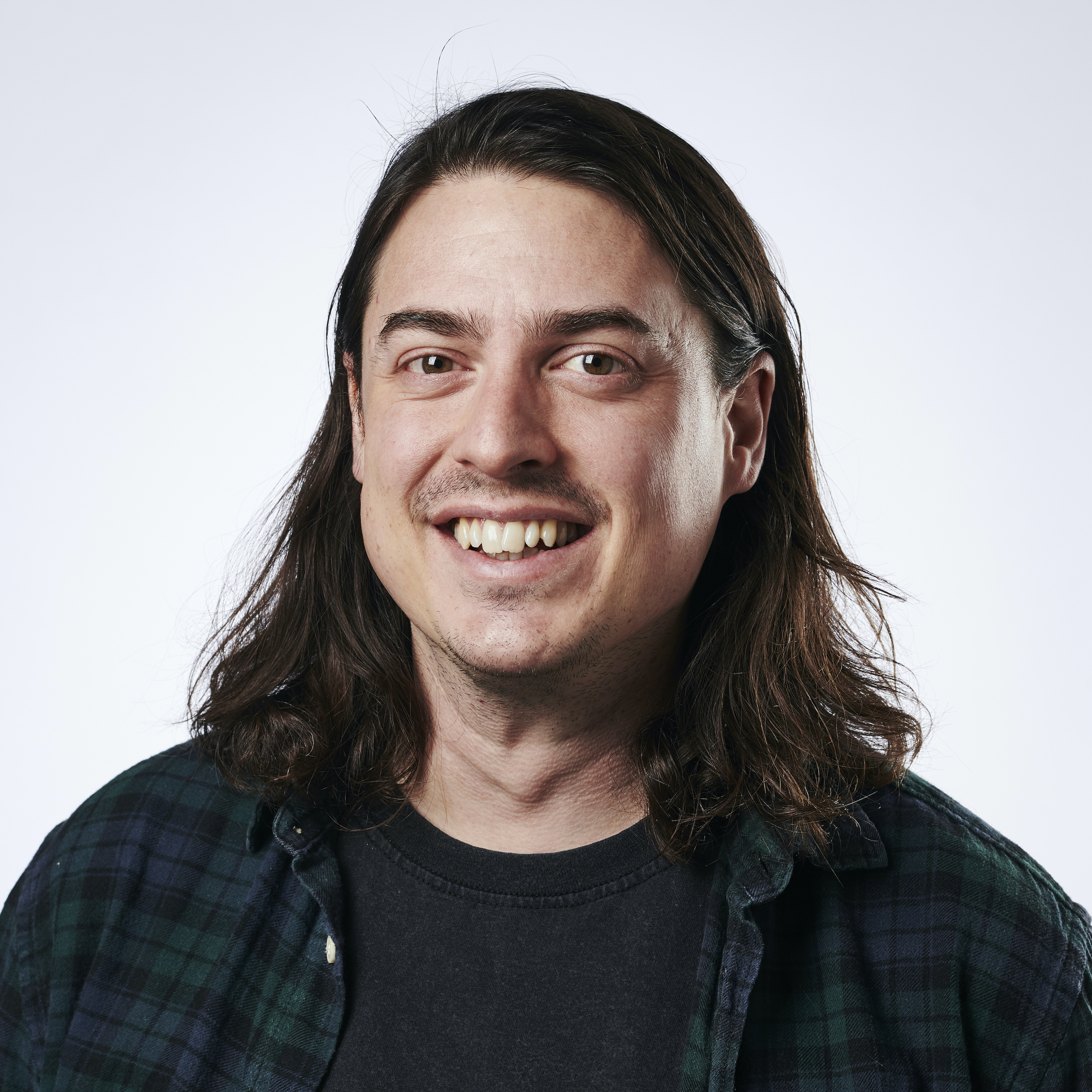
Tom is a music and film fan who's been testing audio kit of all varieties for over 15 years - from turntables and headphones, to speakers and TVs - most of those at What Hi-Fi? where he is currently TV and AV Editor. Before What Hi-Fi?, Tom worked as Reviews Editor and then Deputy Editor at Stuff, and over the years has had his work featured in publications including T3 and The Telegraph, plus appeared on BBC News, BBC World Service, BBC Radio 4 and Sky Swipe to talk tech. He also loves rock and metal and is a particularly big fan of Coheed and Cambria.

James Grimshaw is a freelance writer and music obsessive with over a decade in music and audio writing. They’ve lent their audio-tech opinions (amongst others) to the likes of Guitar World, MusicRadar and the London Evening Standard – before which, they covered everything music and Leeds through their section-editorship of national e-magazine The State Of The Arts. When they aren’t blasting esoteric noise-rock around the house, they’re playing out with esoteric noise-rock bands in DIY venues across the country; James will evangelise to you about Tera Melos until the sun comes up.
Latest updates
16/07/25: The guide has been completely overhauled and includes six new products: Bowers & Wilkins 606 S3, Wharfedale Diamond 12.3, ELAC Debut 3.0 B5.3, Kanto Audio Ren, KEF R3 Meta and House Of Marley Get Together. A quick list highlighting three of the speakers is now included. Each main product now has At A Glance boxes explaining the pros and cons of each speaker, while expert verdict boxes have been added where applicable. The FAQ section has been rewritten to give more valuable information and sections on how we test speakers and why you can trust the Louder team have been added. Finally, there's a new "meet our experts" section.
Read more
You can trust Louder
- The loudest Bluetooth speakers: Break out the sounds
- Bag a pair of the loudest headphones to match
- Spend less with the best cheap Bluetooth speakers
- The best Bluetooth speakers: Top quality options
- Best outdoor speakers: Sound systems that'll rock the outside world
The latest news, features and interviews direct to your inbox, from the global home of alternative music.
Tom Parsons is a music and film fan who's been testing audio kit of all varieties for over 15 years - from turntables and headphones, to speakers and TVs - most of those at What Hi-Fi? where he is currently TV and AV Editor. Before What Hi-Fi?, Tom worked as Reviews Editor and then Deputy Editor at Stuff, and over the years has had his work featured in publications including T3 and The Telegraph, plus appeared on BBC News, BBC World Service, BBC Radio 4 and Sky Swipe to talk tech. He also loves rock and metal and is a particularly big fan of Coheed and Cambria.
- James GrimshawFreelance writer
